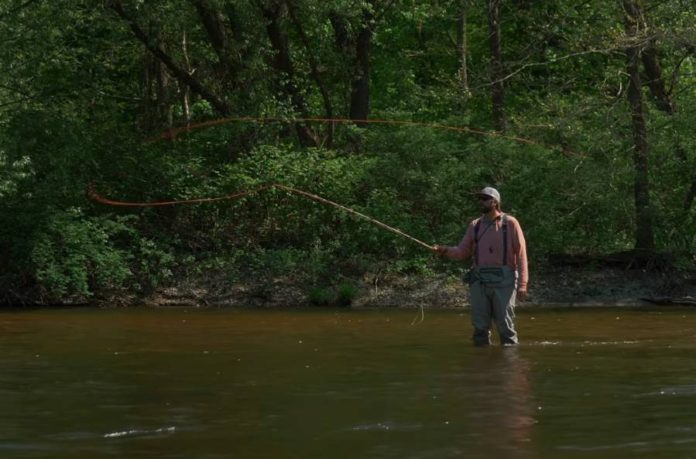There are times when regular casting just doesn’t
work: it’s too windy, your two-nymph rig is just two heavy, or you simply don’t
have the skill to cast as far as you need to. Fear not; there’s a way to get
this done without the standard 10-and-2 motion. In this situation, let the
surface tension of the water to do all the work by employing the water haul.
The water haul works by using the tension created by
the current on your line—rather than the line’s momentum in the air—to actually
load the rod. However, you have to be careful that you don’t end up fighting
the water tension, which can result in a disastrous, even dangerous, cast. The
key is to start slowly and to apply pressure only when your line is at the
surface. Here’s how to do it.
Let out as much line as you need, and allow the current to take the line directly downstream of where you’re standing. When the line is straight out behind you, reach your rod hand downstream as far as you can and touch the rod tip to the surface of the water so there is no slack between the rod and the water. Now—very slowly—begin to make your forward cast, lifting the line off the water as the rod tip rises. You’ll feel the resistance caused by the line in the water; this will load the rod. As the rod passes in front of your shoulder, give a quick, powerful snap of the wrist. (In the video above, Pete advocates pushing with your thumb.)
You’ll be amazed by the way your line shoots upstream, and it will go wherever you point the rod tip at the end of the snap. Fish out that drift, and repeat the process—all day if you want to. If you’re fishing a dry fly, make sure that you slather it with floatant to keep it from getting waterlogged when it’s hanging in the current.
Here’s the caveat: if you try to make that wrist snap before your line is off the surface of the water, you won’t get a smooth forward acceleration. (This is why you wait for the line to straighten below you and why you move slowly at first.) Instead, the line will spring forward like a stretched bungee cord that’s been released. You won’t be able to control the direction—which means the flies could hit you—and your tandem rig will become a beautiful piece of macramé.
Credit: Source link































